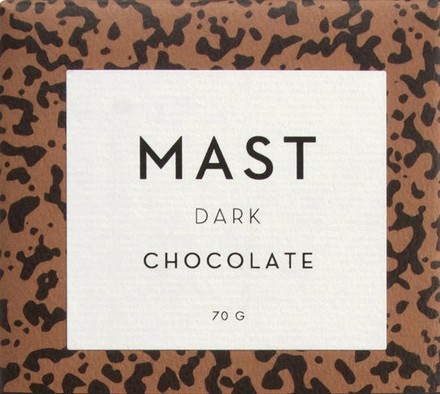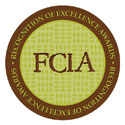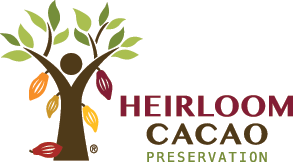/Chocolate Resources/Chocolate Blog/Mast Brothers controversy – It’s about more than chocolate

Mast Brothers controversy – It’s about more than chocolate

December marked the beginning of an onslaught of media stories and online discussions about Mast Brothers, a chocolate maker from Brooklyn, New York. On December 7, Scott Craig of Dallasfood.org released part one of his four-part series entitled “Mast Brothers: What Lies Behind the Beards”, with the rest of the series following shortly after. If you haven’t read this series, you should, as it is a thoroughly researched piece that provides the context for all of stories that came after. If you are behind on your Mast Brothers reading, Dr. Kristy Leissle just published an excellent blog post “Mast Brothers scandal: A news roundup” featuring the prominent media stories pre and post the release of the Dallasfood.org series.
Ecole Chocolat posted a response on our Facebook page shortly after the release of the full series of blog posts. But with the amount of media coverage and discussion that has come since, and given that this is such an important issue for the fine chocolate industry, we thought it was important to write this follow-up blog post to further comment on the issue. Several other industry colleagues have written thoughtful responses, and we will reference many of them here. Our intention isn’t to repeat what has already been said, but to share our own insights as the fine chocolate industry works to understand the implications of this issue for the future.
The issue – transparency
The crux of the issue that the Dallasfood.org series discusses is the allegation that Mast Brothers have not always made all of their own chocolate from the bean themselves, and in the past have melted other maker’s chocolate and packaged it as their own. In a response to the Dallasfood.org series, Mast Brothers admitted as much, but claimed that it was in their early days, saying “At that time, in addition to making chocolate from bean to bar, we also tested with couverture Valrhona” followed by “And while we never claimed to make all our chocolate exclusively from bean to bar in those early days, we did describe ourselves as a bean-to-bar chocolate maker.” This last quote is somewhat perplexing, and if you read their response in its entirety, you’ll find that they don’t directly respond to much of what the blog series brought to light. You’ll find they also accuse the fine chocolate industry of undergoing a “mean-spirited” “takedown” when that wasn’t the case as some in the industry had known about it for years and never shared the information.
To be clear, there are many businesses in the chocolate industry that melt chocolate made by others to create their own bars that they sell in their packaging. You don’t have to make your own chocolate yourself to be credible and sell a great product. These businesses are not claiming that these are chocolate bars they made themselves from the bean – that is the critical distinction.
Why was this story such a big deal?
You might be wondering why this story drew so much attention. There are a few reasons, many of which have to do with the Masts themselves and the image they have created for their brand.
First, it’s important to understand the process involved in actually making chocolate from the bean. In a recent article for Huffington Post entitled “Peak Mast Brothers (It Was Never About The Beards)“, Simran Sethi the author of a new book entitled Bread, Wine, Chocolate: The Slow Loss of Foods We Love“, in collaboration with Clay Gordon from Chocolate Life, eloquently describe the process of making chocolate from the bean. It takes an incredible amount of knowledge and skill to make a beautiful, flavorful fine chocolate. It’s painstaking, even maddening at times. For new chocolate makers, the learning curve is steep as they find their way through bean sourcing and experimenting with equipment. This is one of the reasons why our Chocolate Making from the Bean program is not just about the process of chocolate making, but also focuses on bean sourcing and the business aspects of chocolate making.
Second, the Mast Brothers have built their business on the cultivation of a very particular image for their brand. When they started their business, they were in the right place at the right time. The craft food movement was just emerging in the U.S. The story behind their brand and the packaging was enough to draw people in. Two brothers, craftsmen making chocolate and lovingly wrapping it in beautiful paper. The return to artisanal food and buying products made locally instead of those made by large, multi-national companies was just beginning. And for many who had not been exposed to a craft chocolate bar before, they didn’t have much of a frame of reference for what they were tasting.
You’ll notice in reading the Dallasfood.org piece that their chocolate received positive reviews in those “early days”, with many experienced members of the fine chocolate industry wondering how they were able to produce such a smooth texture for their products based on the equipment they were supposedly using. Some even correctly identified the flavor as Valrhona chocolate. And that the reviews became less favorable once they actually began making their own chocolate from the bean. As the Dallasfood.org series and the article by Sethi & Clay discuss, part of the Mast image was cultivating the idea that they both pioneered many of the processes they used to make their chocolate, and that they were operating outside of industry norms, somehow dangerous bad boys not accepted by the rest of the fine chocolate industry. But holing themselves up in their factory and not allowing people access to their production processes or discussing their business with colleagues just meant that they didn’t have to be transparent about exactly what they were doing.
So take all these things together: 1) making a high quality fine chocolate is a challenging process 2) the Mast brothers were not being truthful about their ingredients, production, and processes, and 3) claiming to have pioneered processes that were in fact created by others before them, it’s understandable that other chocolate makers who have done the work above board would not have a favorable opinion of Mast Brothers, or as Megan Giller put it in her article in Slate last spring “Chocolate Experts Hate Mast Brothers.”
It’s not sour grapes
Reading through all of the fall out and conversations (a quick search of “Mast Brothers” on Twitter for the month of December will give you a good sense), some people may be thinking that others in the fine chocolate industry are jealous of the success the Mast Brothers have achieved. Some would argue that they are better known for their image and the paper their bars are wrapped in than their chocolate, but setting that aside, is this sour grapes?
Having been involved with the craft chocolate industry since its inception, we have only ever found the craft chocolate industry to be one of openness and collaboration. Makers are happy to share what they know to help each other out. I had a conversation with a craft brewer considering getting into craft chocolate at the Northwest Chocolate Festival and he commented how open everyone was, and how this was the polar opposite of the craft brewery industry where people operate under a veil of secrecy.
Again, the issue is transparency and integrity – things the Mast Brothers didn’t show while claiming that they valued these principles.
You haven’t been duped if you’re paying $10 (or more) for a chocolate bar
One of the stories following from the Dallasfood.org piece that generated a lot of attention was written by Deanna Shanker for Quartz entitled “How the Mast Brothers fooled the world into paying $10 a bar for crappy hipster chocolate.” The article itself is well-written and corroborated many of the claims that Scott made in his series. But we were concerned that the headline focused on the price of the bars. It seems the intent was to highlight that people were spending $10 on chocolate of inferior quality because they were buying into the Mast hype. But watching the conversations that followed on social media, the focus in part became a question of who would be crazy enough to spend $10 on a chocolate bar? If you did, the joke was on you. You were duped and bought into the hipster image and the pretty packaging.
This was further illustrated by an unfortunate article “Here’s How Mast Brother’s Stands Up Against The Big Ones”, the big ones being Hershey, Lindt, Godiva, Cadbury and Valrhona. While the response to the Mast Brothers bars was less than positive, this goes to show what most people think of when they think of chocolate. Other than Valrhona, none of the other bars are really in the same category from a quality perspective, and even Valrhona is a much larger operation than any of the other small-batch makers.
We have the honor of knowing the actual founders of the movement since they started in the late 1990s – people like Robert Steinberg, & Steve de Vries. They were soon followed by other pioneering chocolate makers such as Art Pollard, Shawn Askinosie, John Nanci and many others. We’ve also helped to educate a number of bean to bar chocolate makers since then that we are proud to call our graduates. We know that craft chocolate makers face an uphill battle in educating consumers about why a high quality craft chocolate bar costs anywhere from $8 to $20, when they can buy a mass-market chocolate bar for $2.
A quick glance at the list of bean to bar chocolate makers on our website shows the number of makers that are working in this space, and this list isn’t exhaustive as new companies pop up all the time. These chocolate makers are creating a small batch quality product, in most cases sourced from difficult to find fine flavor beans, and in many cases, paying the farmers who grow these beans a premium. Their production costs are reflective of the processes required to make a high quality fine chocolate. That is why these bars cost more. Shanker wrote a subsequent piece on December 22, 2015 for Quartz entitled “Yes, some chocolate bars are actually worth their $10 price tags“. This is a well-written article that gives a voice to this issue and names excellent chocolate makers, but unfortunately by then the scandal had taken on a life of its own.
In a previous blog post, we elaborated on some of the challenges currently facing the cacao supply. A chocolate bar made from high quality cacao and made by a skilled chocolate maker that has paid a premium to the farmer growing this crop SHOULD cost $10 or more.
As this post was being written, Shawn Askinosie provided his perspective on the Mast exposé in a Huffington Post article “Things I Know To Be True About Craft Chocolate & Small Business: As The Dust Settles on Mast-Gate“. Straight from the mouth of a chocolate maker informed by years of experience, he brings a global perspective to the cost issue and the craft chocolate industry as a whole, and gives an important voice to the people who have been overlooked by much of the coverage of the Mast exposé – cacao farmers. In much of the world, they live in poverty, and if we want them to continue to grow fine flavor cacao instead of ripping out their trees to grow more lucrative crops, we must be willing to pay more for our chocolate.
How Mast Brothers have benefited the fine chocolate industry, scandal & all
A quote that illustrates many of the issues at hand can be found in Pam Williams & Jim Eber’s book “Raising the Bar: The Future of Fine Chocolate” that was written in 2012 and is still true today. Joe Whinney of Theo Chocolate says: “I can’t really think of one major brand that hasn’t made some sort of enhanced claim. So that’s also why I think transparency is important. Products have to be three-dimensional in terms of the product quality, its price, and value proposition, and the impact that it is having on the community and the rest of the world. That’s where the future is.”
While we are concerned about the possible negative implications for the fallout from the Mast Brothers exposé in terms of focusing attention on the cost of their bars, it can be argued that they have had a positive impact on the industry in some respects. They have exposed a huge audience to the idea of craft chocolate, and that paying $10 for a chocolate bar isn’t ridiculous. They will hopefully encourage consumers to ask more questions about the products they are buying and look beyond the marketing. While it remains to be seen what, if any, implications this situation will have for their business in the future, they also serve as a valuable cautionary tale about the importance of transparency, honesty, and integrity.
Taste and ask lots of questions about your chocolate
We encourage you to ask questions of your favorite chocolate makers and chocolatiers. In general, you will find them an open and chatty group – in fact, you may not be able to get them to stop talking about chocolate once you get them started. Their passion, knowledge and skill comes through immediately. Ask where they source their beans from, how their chocolate is made, what ingredients are used. Try lots of different types of chocolate and learn what you like the best. Don’t feel pressured to buy into hype – if you hate something that everyone else loves, that’s okay. That’s the wonderful thing about chocolate, there’s something for everyone.
At Ecole Chocolat we look forward to continuing to play a role in educating chocolatiers and chocolate makers to help them hone their craft, continuing to support efforts to preserve fine flavor cacao with our work for the Heirloom Cacao Preservation Fund (HCP) to designate cacao determined to be of high quality as “heirloom” to help the farmers that grow these species demand a higher price for their cacao, and supporting the fine chocolate industry in educating consumers about fine chocolate.
Want to learn more about making delicious chocolates and confections? Check out our Professional Chocolatier Program!
Get reminders about upcoming classes! To receive program updates and news, click the link below.
Photography by Jessica Washburn, Bliss Chocolatier and Ecole Chocolat





